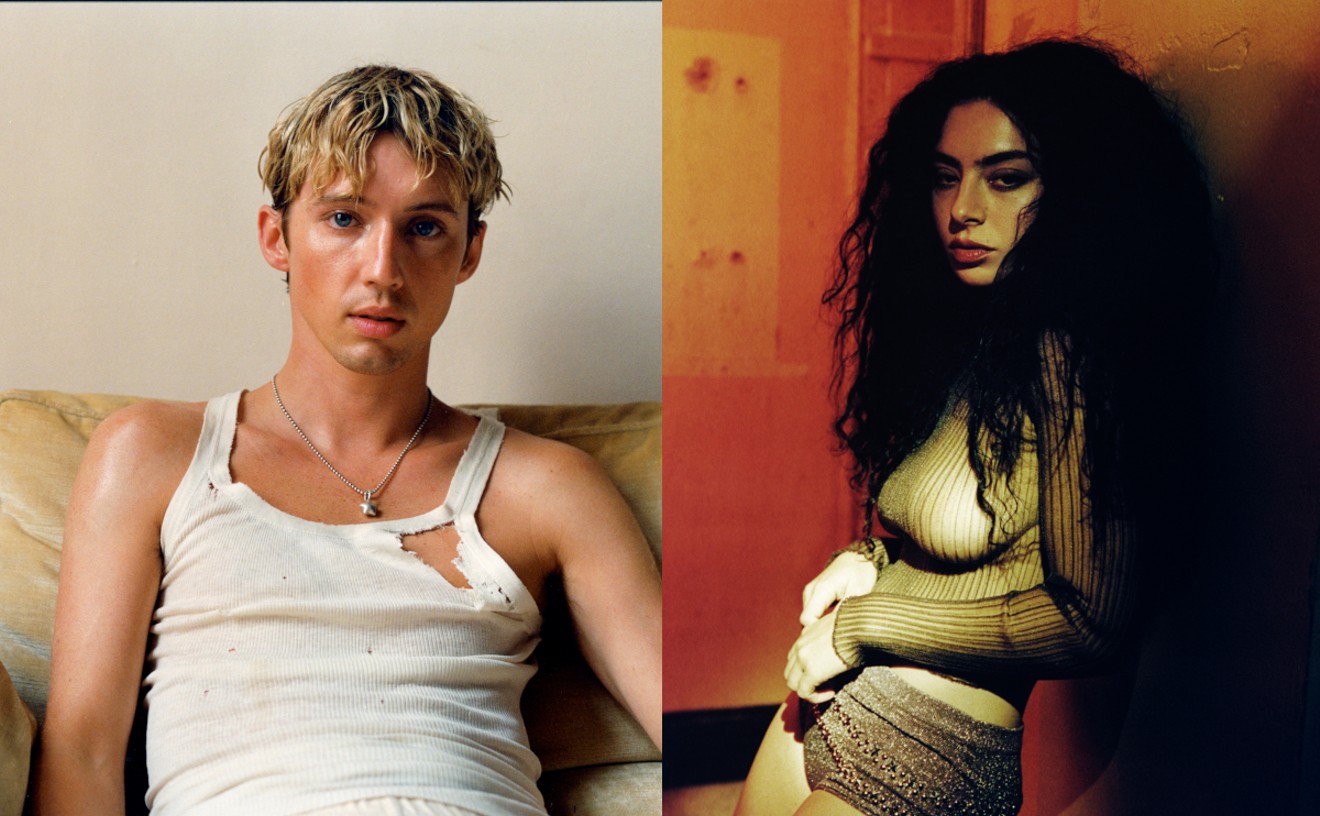The remark almost makes you want to say to him, in your best Church Lady voice: "Well, isn't that special?"
But Danzig, who has been accused of preaching Satanism throughout his career, hardly breathes fire. In fact he comes off as thoughtful, articulate, and, well, awfully serious. Despite his heavy-metal posturing, no one will ever mistake Glenn Danzig for the boys of Spin al Tap.
In fact Danzig is nothing less than a protean figure in the annals of metal. Born into the same infant punk scene that spawned the Ramones and the Damned, he's had more than a bit part in the evolution of American hard rock.
Danzig's first big gig came way back in 1978 as singer for the Misfits, a B-movie tribute that mixed horror-house themes with blistering (but toe-tapping) protopunk. Next came Samhain, the late '80s precursor to Danzig, whose sound veered toward polished Goth-metal.
Danzig -- the band -- emerged with an eponymously named album in 1988, its sound rooted in Black Sabbath-like intensity and lyrics drenched in pagan sex, devil worship, and blood sacrifice. Danzig II: Lucifuge, released two years later, added a few stylistic enhancements and demonstrated that Danzig's world view isn't all dark shadows. More sophisticated than its predecessor, Danzig II introduced sharp, detailed, wide-screen production that moved away from bludgeoning sludge to emulating the cold, desolate danger suggested by the lyrics. Danzig III: How the Gods Kill garnered as much attention for its frightening cover (by Swiss airbrush artist H.R. Giger) as the heart-of-darkness riffage contained within. The diabolically powerful Danzig 4, released in 1994, plunged back into ferocious simplicity.
But by 1995 the group's long-time label, American, began to sink, threatening to pull the band down the drain with it. Around the same time, Danzig sacked his original bandmates when he felt creative differences -- and substance dependencies -- had rendered them inefficient. New cogs were installed in the Danzig machine, and the reborn clan created Danzig 5: Blackacidevil, borrowing heavily from the computerized malevolence of industrial purveyors such as Ministry, Nine Inch Nails, and Foetus.
With American embroiled in lawsuits and bankruptcy, several parties, Danzig says, expressed interest in releasing Blackacidevil. He decided to go with Hollywood Records, a Disney subsidiary, because they offered him the opportunity to launch his own small label as well. But the deal quickly fell apart.
"We had religious groups protesting the signing of Danzig to Hollywood," he recalls. "Then we had Roy Disney [vice chairman of the board of directors for the Walt Disney Co.] protesting the signing of Danzig to Hollywood!
"Roy freaked out when he found out we were actually on a label that Disney owned," Danzig continues. "That was it. And after that it was a nightmare. Later on the same thing happened to Insane Clown Posse. Eventually we were able to get all our stuff back, sever our deal, and get out of there pretty clean."
These artistic and moral conflicts of interest weren't uncovered until paperwork committing Danzig to Disney was already finished, which meant Blackacidevil was officially lost through the cracks, though it should see re-release later this year. Danzig finally set himself up with his own label, Evilive, to handle reissues and new material without corporate/parental control. Now comes Danzig 6:66 Satans Child, which is being issued by Evilive through E-Magine Entertainment, an NYC-based Net-centered imprint.
Satans Child is stereotypically excessive, channeling comic caricature into head-banging glory and focusing Danzig themes (pain, evil, death) into a shiny black mass. Combining the band's trademark mayhem with Danzig's finest Metal Elvis/Lizard King vocals, Satans Child has much in common with the scary apparitions that grace those old monster-comic mags.
The album opens with a fast, lean (and to be fair, hummably melodic) anthem, "Five Finger Crawl," which bursts forth with sneering, chanted vocals and a panzer-division guitar assault. "East Indian Devil (Kali's Song)" shows that Danzig's love for dark entities runs multiculti, while "Unspeakable" and the plodding "Apokalips" depend on raging, circular guitar lines and undercurrents of synthetic bass for their firepower -- typical Danzig fare. But "Cold Eternal," one of his best-ever compositions, breaks through the pain.
The album ends with "13," a tune Danzig penned for Johnny Cash that originally appeared on the country stalwart's 1994 album American Recordings. The dusty country and western undercurrent remains, but back in Danzig's hands, the song becomes a pulverizing dirge.
E-Magine Entertainment also is responsible for hosting www.danzig-verotik.com, a Website devoted to the band's music, and Verotik, the comic book side of the Danzig equation. Verotik, which Danzig began in 1998, is a hobby/business that allows him to manage a stable of artists producing colorful comic books devoted to -- what else? -- sexually charged, violent imagery.
Verotik's comic book agenda is hot for busty, scantily clad über-vixens (check out Satanika) battling foes for conquest of the planet. Some of the artists Verotik employs have noticeably been influenced by the Frank Franzetta/Heavy Metal school of cartoon art.
"It has an underground sensibility," Danzig says, "but with the best artists and stories. It's for people who don't want to buy superhero crap." With the edgy titillation and demonic imagery found in Verotik's comic line, however, there's been some distribution resistance. "Some people have tried to steer retailers away from our books, telling them they'd be arrested if they carry them," he complains. Start talking about these enemies of art, and Danzig practically spits out: "Fuck everybody."
The burgeoning comic book empire is but one project in a year that has turned out to be the fortysomething rocker's most productive yet. He's also set to crank out a complete collection of Danzig B-sides as well as a double live album chronicling the band's recent tours with Korn, Soundgarden, Marilyn Manson, and Type O Negative. He'll also release a second installment of Black Aria, his 1992 solo record of self-penned instrumental classical pieces designed to parallel Milton's Paradise Lost. Black Aria's followup, he says, will be in a similar vein, with nods to the "awesome" group Dead Can Dance and newfound instruments like Japanese kodo drums. Evilive also will reissue the Danzig back catalogue and release a comprehensive Samhain box set later this year. In conjunction with that project, Samhain will temporarily re-form and open shows for Danzig on its upcoming U.S. tour.
With all this activity, it's no wonder Danzig doesn't have a lot of time to pontificate about the Dark Prince, good versus evil, or fundamentalist preachers. He refrains from entering into debates of religious philosophy with antagonists or evangelists.
"None of those guys want anything to do with me," he says. "They only want to get into conversations with people they can make look dumb. So anyone with a modicum of intelligence they're not really going to want to talk to. They want really stupid people to come on and say, 'I'm a Satanist!'"
And cagey Danzig ain't about to give anyone that pleasure. Guarded when it comes to his opinions, he's not given to outlining his each and every belief. What he will say, emphatically, is that he's not catering to heavy metal's lowest common denominator. He scoffs at the notion that all metal fans are Beavis and Butt-head clones.
"Any group of people can be a very dumb group" is how he sees it. "I'm kind of lucky in that Danzig fans are pretty intelligent. They're pretty smart, or at least they want to be. They want to expand their horizons. That's one of the things I like about my fans. There's always stupid people in every group, but that's not anything I'm interested in."










